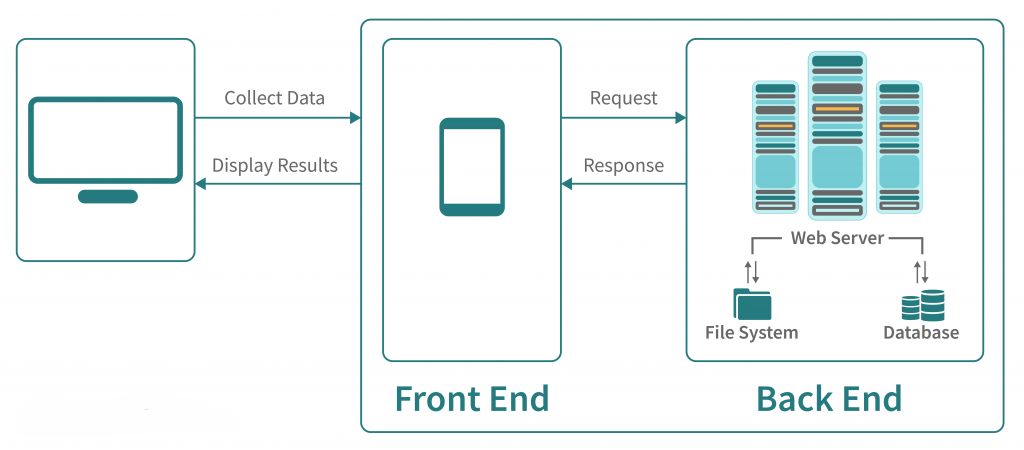Web applications are becoming an essential part of everyone’s lives, which allows people to access a variety of services and for businesses to interact with their clientele. Microsoft created the robust web development framework ASP.NET. It helps programmers to create scalable, dependable, and fast online applications. The finest framework for creating and developing websites and online applications is provided by. NET.
With ASP.NET, businesses can develop dynamic websites and online services using a huge range of tools and frameworks. Their ability to create desktop, mobile, and online applications is enhanced. We will explore all the essential elements of creating scalable online applications with ASP.NET in this extensive guide, from architecture to best practices.
Importance of Hiring Dot Net Developers
Hiring knowledgeable and experienced Dot Net developers is essential when using ASP.NET to create scalable online apps. These experts can create scalable and effective web solutions by utilizing their extensive understanding of the ASP.NET platform. Businesses can achieve optimal performance and ensure the effective implementation of their web projects by hiring Dot Net developers.
Hiring qualified Dot Net developers with the requisite experience is essential when starting a project for building scalable web applications with ASP.NET. While hiring Dot Net developers, keep the following points in mind:
- Skills and Expertise
Seek engineers with a solid background in .NET Development Services, C#, SQL, and ASP.NET, among other related technologies. They should be skilled in using the features and best practices of ASP.NET to create and implement scalable solutions.
- Portfolio and Experience
Examine the developers’ past work on related projects and evaluate their portfolios. Their capacity to manage complicated requirements and maximize performance is demonstrated by their experience developing scalable online applications using ASP.NET.
- Communication and Collaboration
Collaboration and effective communication abilities are critical for the successful completion of projects. Dot Net developers who can collaborate with your team, grasp your business requirements, and express their ideas are great assets.
- Performance
Applications built with .NET are renowned for their performance and scalability. Skilled.NET programmers know how to build and optimize apps so they can support expanding user bases and offer quick response times. This scalability is essential for companies hoping to grow over the long haul.
- Maintainability and Support
Over time, maintaining well-structured .NET applications becomes easier. Expert.NET developers adhere to industry standards for code structure and documentation, which facilitates handoffs and allows for program enhancements as needed. The.NET framework also gains from Microsoft’s frequent releases and robust community support.
Scalability in Web Applications
Any online application that hopes to manage rising user traffic and data volume must be scalable. Developing Software Development firms that are scalable guarantees that the system can accommodate increasing needs while maintaining security, usability, and performance. Asynchronous programming, load balancing, caching strategies, database optimization, and performance monitoring are the elements that go into scalability.
Understanding the ASP.NET Framework
It gives programmers the instruments and assets required to create dependable, expandable, and full-of-stature online apps. It has many capabilities, which include session management, routing, authentication, and caching, all of which help create scalable and effective online applications.
Building Scalable Web Applications
The following factors must be taken into account while Building Scalable Web Applications with ASP.NET-
1. Design and Optimization of Databases
Competent database architecture and optimization are essential to the scalability of online applications. The performance of the application can be greatly improved by utilizing effective indexing techniques, optimizing queries, and putting in place appropriate data partitioning. In addition, employing caching techniques can enhance response times and lessen the strain on the database.
2. Caching techniques
Using caching strategies can significantly increase web applications’ scalability and speed. Caching technologies offered by ASP.NET include output caching, data caching, and fragment caching. By caching frequently requested data or rendered views, these strategies lessen server load and enhance application responsiveness.
3. Load Balancing and Clustering
By dividing up incoming web requests among several servers, load balancing makes sure that no single server is overloaded. Businesses may handle heavy user loads and achieve better scalability and availability for their online applications by clustering many servers and setting up a load balancer. To create apps that meet your needs, you can work with specialized IntelliSource developers.
4. Asynchronous Programming
When using ASP.NET, asynchronous programming approaches can improve web application responsiveness and speed. Developers can improve scalability and user experience by handling more concurrent requests and freeing up server resources by utilizing asynchronous activities.
5. Performance Tracking and Adjustment
Scalability Strategies for ASP.NET Applications depend on ongoing performance optimization and monitoring. Performance bottlenecks, resource usage, and possible problems can all be found with the aid of monitoring programs. By consideration of these factors and prudent decisions, developers can optimize the performance and scalability of their apps. To increase overall efficiency, they can tweak caching settings, optimize code, and fine-tune database queries.
Which .NET Framework is Best for Web Development?
- ASP .NET
Web pages make up a web application. As a result, you may create data-driven interactive applications with web controls like Data Grids, text boxes, drop-down menus, checkboxes, etc., by using ASP.NET for web apps. These controls aid in the creation of HTML elements that improve user effectiveness on web pages. It has every feature needed for web development.
- NET CORE
Another open-source framework built on the.NET Framework and.NET Core Framework is called ASP.NET. It is a multiplatform-compatible version of ASP.NET that has been enhanced.
Unlike ASP.NET, which is limited to Windows, developed applications can operate on Linux, Mac, and Windows. In addition, it supports modular web application architecture more effectively than ASP.NET and is likewise built on the Model-View-Controller architecture.
Characteristics of ASP.NET & ASP.NET Core?
The Characteristics are:
- Applications model- Real-time websites, microservices, web pages, and APIs can all be created.
- Architectural Pattern- The Model-View-Controller (MVC) pattern is implemented by both frameworks.
- Supported files- Windows Presentation Foundation, Windows Workflow Foundation, and Windows Communication Foundation are all supported by both.
Components of a Web App’s Standard Architecture

The standard architecture offers superior system flexibility for future growth and easy file navigation, which is a big benefit for developers.
1. Scaling the Database Performance
Scaling becomes essential because the database could have a massive data volume and require a separate server. Implementing the spread of computing processes and indexes can help support it.
2. Distribution of Computing Process
By dividing up complex mathematical processes in the database, this function reduces server demand. Then, each server is given a full copy of the database to manage a specific task.
There are a few ways to finish this challenge despite its difficulty.
- A portion of the data can be added to each server thanks to database sharding. One server receives all of a user’s queries because, for example, each server only keeps data from a portion of the user base. A rise in users allows you to expand the number of servers. Data can be distributed among servers based on dates as well.
- Every server has a complete copy of the database thanks to replication, allowing clients to read data from any server. As the data can fit on a single server, more performance is expected.
3. Indexes
After taking into account the database’s indexing term, we have concluded that reducing the number of disk accesses during request processing optimizes database performance. The necessary details can be quickly added to the dataset by indexation, even if they are spread across several physical disks.
4. Scaling Back- End
The project’s back end may be strong and dependable, but that doesn’t guarantee the load won’t increase. It’s time to take care of scaling the application’s back end if, for whatever reason, there is constant load growth that causes unstable operation. It is where the idea of distributing requests among servers becomes relevant.
Applying it to the web application requires you to distribute inquiries evenly among the two computers and transfer some scenarios and modules to the second server. You can transfer the load to the other server and offload it from the primary hardware by doing this.
5. Balancing Node
In order to protect the back-end from overloading and to make the program scalable, balancing nodes distribute devices. The balancers assign connections to nodes if the volume of queries continues to increase. The performance of the service improves as you add additional nodes.
6. Balancing on the Client Side
Incorporate client-side balancing in addition to server-side balancing. Improved latency and scalability are possible, but the cost is increased complexity.
Developing scalable web apps with ASP.NET necessitates using best practices in development and having a thorough understanding of the technology. Businesses can ensure their online applications can handle growing demands by concentrating on database optimization, caching strategies, load balancing, asynchronous programming, and performance monitoring. The Microsoft.NET framework created ASP.NET with website functionality for web applications.
As it is an open-source program, the creator has a complete idea about how it is developed. Users search for features and information on dynamic websites. The technologies support multiple operating systems offered by.NET web application development. For creating websites and web applications, it is a dependable, user-friendly, and quick framework.

